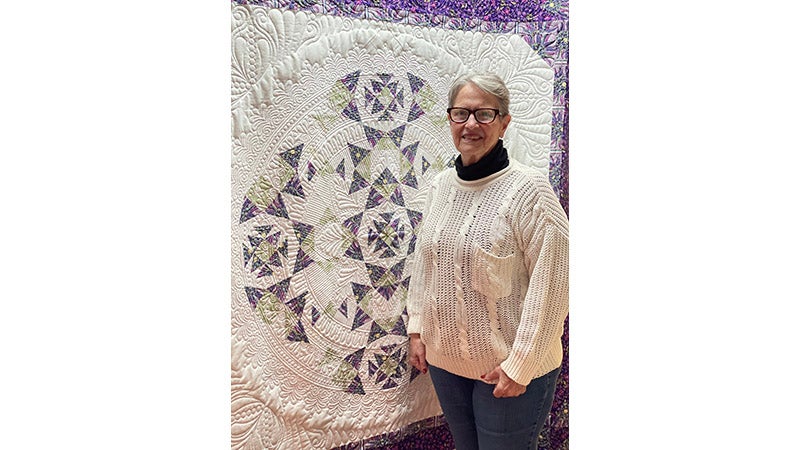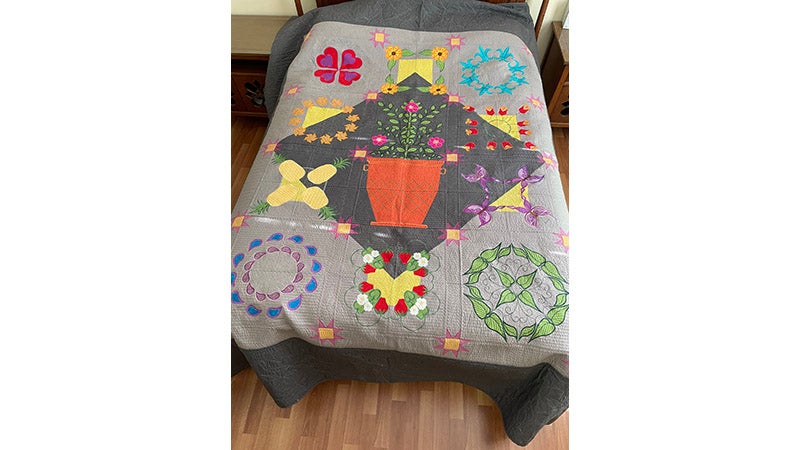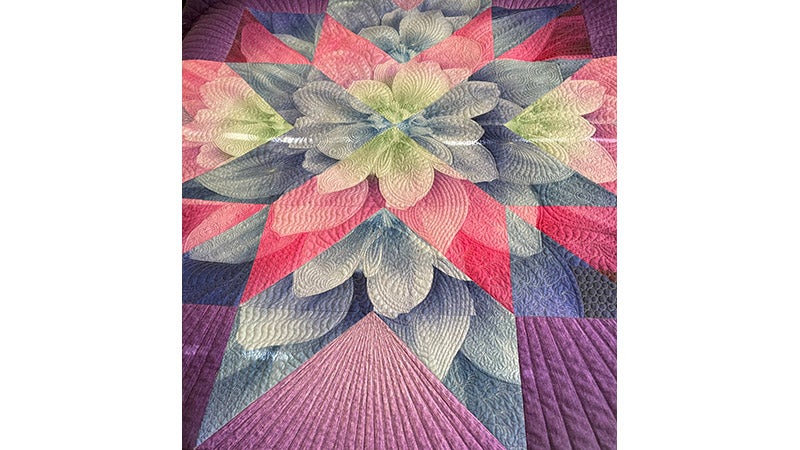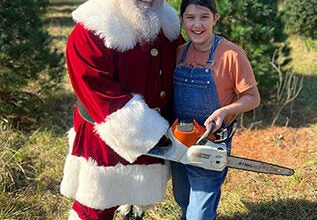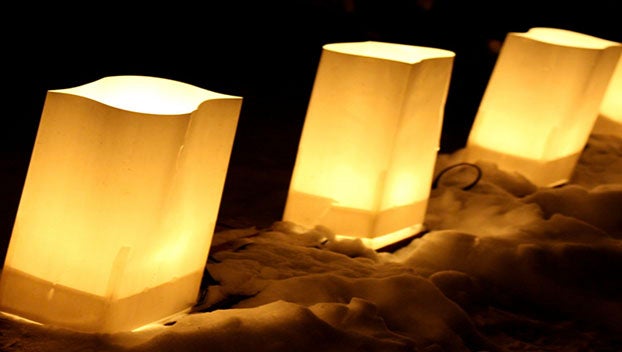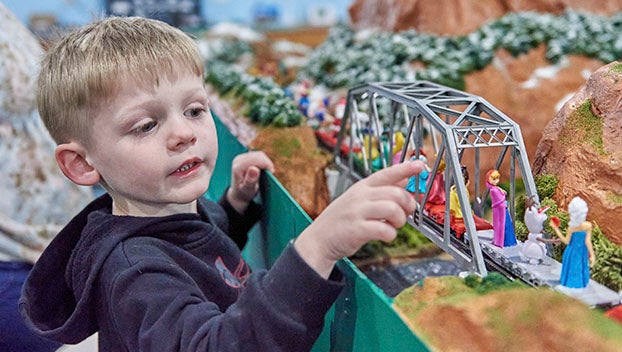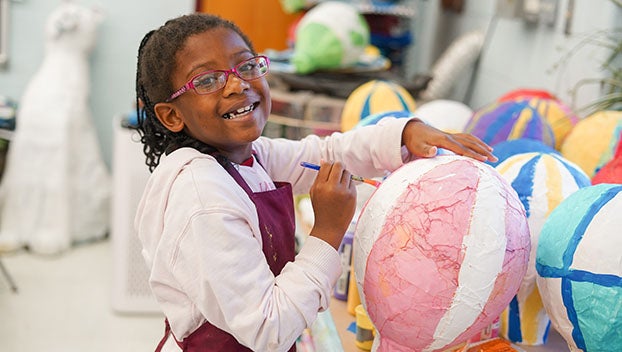Artist in Residence — The artistry of a productive technician
Published 6:00 am Wednesday, March 17, 2021
|
Getting your Trinity Audio player ready...
|
Judith Kennedy has been sewing for most of her life, and it eventually opened the door for her to an engaging and educational exploration of quilting and embroidery.
Initially, her sewing skills were focused on producing one of the most practical and fundamental things imaginable.
“I think I was in eighth grade or a freshman in high school when I started making my own clothes,” she said. “And through most of my life, I didn’t really have to.”
But then in 2000, she and her husband retired and decided to change their life significantly.
“(From Lynchburg,) we moved onto a boat and went to the Caribbean and lived on the boat for eight years,” she said. “So while we were on the boat, I made my own clothes.”
She affirmed that living on a boat in the Caribbean was, indeed, as exciting and awesome as it sounds.
“Oh, yeah, it was fun,” she said. And finding more use for her abilities, “I had to do upholstery for the cushions on the boat and all that kind of stuff.”
Kennedy said that by the time she and her husband returned to the States, her sewing machine had largely succumbed to the salt air.
So she embarked on a search for a good machine to replace it and ended up finding one on eBay that was five years old and nearly unused.
“The man who was selling it, it was his mother’s,” she said. “She had died two years before, and he’s finally getting around to cleaning up her sewing room, and he had absolutely no concept of what he was selling.”
It was an upper level sewing machine that had an embroidery feature.
“So, it was a really good deal, and he threw in all kinds of other stuff, some of which didn’t have anything to do with that sewing machine,” she said. “And so I said, ‘Well, now I’ve got this thing. I’ve got to learn how to use it.’ And so that was where I started with that.”
Later in 2008, she saw a picture of an embroidered quilt.
“I said, ‘Oh, I want to do that,’” she recalled.
She went to a local quilt shop in Lynchburg to get fabric and supplies and saw there was a class for a paper pieced quilt that she said was so far over her head she had to try it.
“So I’d been working on the embroidered quilt, and I got a pattern from a friend for another quilt, and then I did this big paper piece thing, and I kind of got hooked because unlike clothes, quilts are flat, they don’t have curves — well they do, but not very often have curves in them — and they’re easier to sew,” she said.
Kennedy noted the simplest description of what quilters do is the following — they buy big hunks of fabric, cut them into little bits and sew the bits back together to make a big hunk that’s somehow different from the first one.
As she went about putting the three layers of one of her quilts together, she was down on the floor, pinning and piecing, and she realized that this work situation was not going to work for her.
“So I got a longarm (quilting machine), because you just put the stuff on rollers,” she said. “My longarm is 14 feet long, and it has rollers that are 14 feet long. And then it has basically a sewing machine mounted on it, not the way you normally think of a sewing machine but so you’re looking at the end of it, and that’s mounted over the rollers, and you put the fabric on the rollers, and you just move the machine over the fabric.”
Kennedy decided she liked this setup, but she wanted a computer on it because she said she was not very good at hand-guided quilting.
“So I put a computer on it, and now almost everything I do is done on the computer, and it’s very intricate, and it’s very heavily quilted, a lot of it,” she said. “From the time I got the computer, it was like, ‘I’ve got to learn more about this.’ So I think I have discovered that I’m an inveterate student — I’m going to be a student forever.”
Explaining how she works with the computer, she said she tells it what size piece she is working on and then picks a pattern and adjusts it to fit into that particular size, whether it’s a particular block or just a particular piece of fabric.
“I’m not an artist,” she said. “I’m a great technician, though.”
However, there is a creative aspect to what she does that she enjoys.
“When you load a quilt on the frame, and you sit there and go, ‘What do I want to do with this? Do I want to do flowers or feathers in there, or do I want to do something geometric and modern?’ — that’s an artistic part of it,” she said.
She noted this is the quilting part of the process.
“Designing, deciding what you’re going to do with the quilting machine, that’s kind of the artistic end of it, I guess,” she said.
She explained what inspires and guides the decision-making process for herself.
“The first thing is that if it’s a quilt for somebody else, then I ask them what their vision is — ‘What do you think you’d like to see on this?’” she said. “And if it’s one of mine or if it’s just something that somebody says, ‘Well, do whatever,’ I look at the colors and the pattern and — this sounds really corny — I kind of ask the quilt what it wants.”
Sometimes a quilt will call for straight-line designs or feathers.
“Usually when I’m loading it on the longarm, it’s like, ‘I don’t know what I’m going to do on this,’” she said. “It keeps life interesting, and I hold my breath before I push the button for it to start sewing, and I go, ‘Oh, I hope this looks good when I get to the end of the first row,’ or ‘I hope this is the right decision.’”
She said she tends to like soft-rounded designs on her quilts.
“Occasionally I see a quilt that really wants a geometric, but most of the time they’re soft flowers and feathers and swirls and things like that,” she said. “I’m a batik freak, which is kind of a monochromatic kind of fabric that doesn’t particularly have a design to it, so I guess it’s the color combinations rather than creating a picture kind of thing that I like.”
Kennedy and her husband moved to Prince Edward County in 2012. She said it was probably around the middle of 2013 when she was rummaging around trying to find a fabric shop that she found Lib’s Place, a business in Rice that sells arts and crafts materials, including sewing machines, and that offers classes in quilting, sewing, needlework, drawing/painting, jewelry making, cake decorating and card making.
She found Lib’s Place to be very welcoming.
“So I gradually just got involved, and I teach the occasional class,” she said. “The class I’m teaching (now) is called the ‘Mandela Quilt,’ and it’s a modern quilt, which means it has lots of open, blank space in it, which is designed to have stitched patterns, quilted stuff in the blank spaces.”
She is also part of an embroidery group at Lib’s Place. The group is composed of people with embroidery machines that gather to help each other out by answering each other’s questions and offering insights and suggestions.
Asked if she is more of an embroiderer than a quilter, Kennedy said she is a little of both.
“Because I have a longarm, I really do more quilting than I do embroidery, but my daughter has just brought me a huge bag of jackets and stuff to put names on and stuff for her office, so that’s going to be embroidery for a week, I think,” she said.
Through Lib’s Place, Kennedy is also working on charity quilts for the Aloha House of Hope, a home in the county for children who have been abused, neglected and/or abandoned by their parents or other caregivers.
Ultimately, what has kept Kennedy involved in quilting and embroidery over the years has been a desire to be productive with her time.
“As I get older, I think I have found that I just need something to do,” she said. “I can’t sit around and play on my computer all day. Housekeeping is just not on the list. My brother used to say that tools didn’t fit his hands. I’m telling you a vacuum cleaner doesn’t fit mine.”
She said she loves to cook.
“Unfortunately, somebody has to eat what I cook, and I become larger and larger and larger when I do a lot of baking, so we avoid the kitchen,” she said.
But in her retirement, she has found a productive, beneficial and enjoyable activity.
“I just go in the sewing room and play on the sewing machines,” she said.


